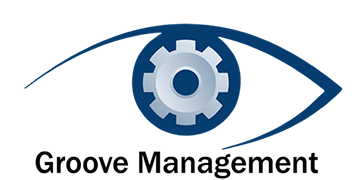3 LEADERSHIP LESSONS FROM A WORKSHOP AT THE MCCOLL CENTER FOR ART + INNOVATION
Max DePree, the founder and CEO of office furniture company Herman Miller, wrote a book titled “Leadership is an Art.” It’s a good read and offers lots of valuable leadership nuggets.
Recently I attended a creativity workshop at at McColl Center for Art + Innovation here in Charlotte, and the program got me thinking about the Max DePree book.
Lesson: If leadership is an art, then maybe a leader’s team is the proverbial canvas upon which the artist paints.
As an executive coach, I spend a lot of time working with leaders to enhance their effectiveness. The open enrollment creativity program that I attended at McColl Center was a valuable opportunity for me to sit in the student seat for two days. Here’s what I learned.
Artists and their creative process present an incredibly powerful approach to driving innovation in business. Shaun Cassidy (not the Hardy Boy) is one of the artists who taught the program. Shaun shared his creative process with our group and talked about the reward that he finds when he takes risks with his work. Because the outcome is not predefined in his work, he has the freedom to take chances and let his work evolve.
Shaun explained that too many organizations try to take a linear approach to creativity and innovation. While that approach may work for running an operation, it is the wrong approach when trying to develop new products or to drive innovation.
Shaun was commissioned by the city of Charlotte to design artwork for stations along the light rail. The engineer in charge of the project set several parameters, including that the artwork had to be able to withstand the elements and there was not room for artwork on the platforms themselves. Shaun viewed the constraints as an opportunity to channel his creative process. He explained that while walking in a park he had picked up a dried out leaf and was intrigued by the skeletal veins of the leaf. He used the leaf as his inspiration for the Charlotte light rail project.
Shawn created 40 sculpture leaves that are incorporated into the track fencing at 10 LYNX Blue Line stations. The leaves are all representative of trees native to Charlotte. Shaun was able to use the divider fencing as the focal point of his art. Each leaf is unique and looks as though the leaf has blown up against the fence. The leaf is green above the fence representing life and Charlotte’s amazing tree canopy. The veins of the leaf incorporated into the fence represent the street map of each particular station/neighborhood. Very few Charlotte residents are aware that the leaves are actually street maps, but that is part of the mystery that Shaun hoped to provide with his art.
Shaun’s success with the LYNX project was a result of his ability to take risks and to take a non-linear approach to creating his art. In the workshop, he facilitated an activity that got each of us working with art and exploring our own creative processes.
Lesson: Corporations need to be much less prescriptive when trying to drive creativity and innovation. If failure is an option, people will take more risks and innovation will occur naturally.
The other big take-away I had from the program was a bit of a paradox. We trust strangers more than people we know. Seems like a bit of a crazy statement, but I saw several examples of it during the program. The two-day workshop brought together 14 participants from various backgrounds and various professions. None of the participants knew each other entering the program.
We explored some very personal topics and discussed personal struggles and fears. The work was meant to help the participants to develop greater self awareness and to access our creative tensions. What amazed me was the openness of all 14 people to share openly some very personal stories and to expose vulnerabilities.
Art and Innovation Workshop
Having brought clients through a similar workshop at McColl Center, I never saw intact work teams operate with such trust and candor. It amazed me to see how open and trusting a group of total strangers had become in just two days.
It got me thinking of the paradox of trust and judgment. Because we do not work together, the participants felt free from judgment and open to sharing. With work teams, flaws are seen as a sign of weakness not strength. Our paradigm for the program was to trust others and to be authentic without fear. It was liberating.
Lesson: While team workshops can be very beneficial, attending open enrollment programs can be much more effective for individual growth.
I highly recommend that all leaders challenge themselves to attend an open enrollment workshop at least once a year.

